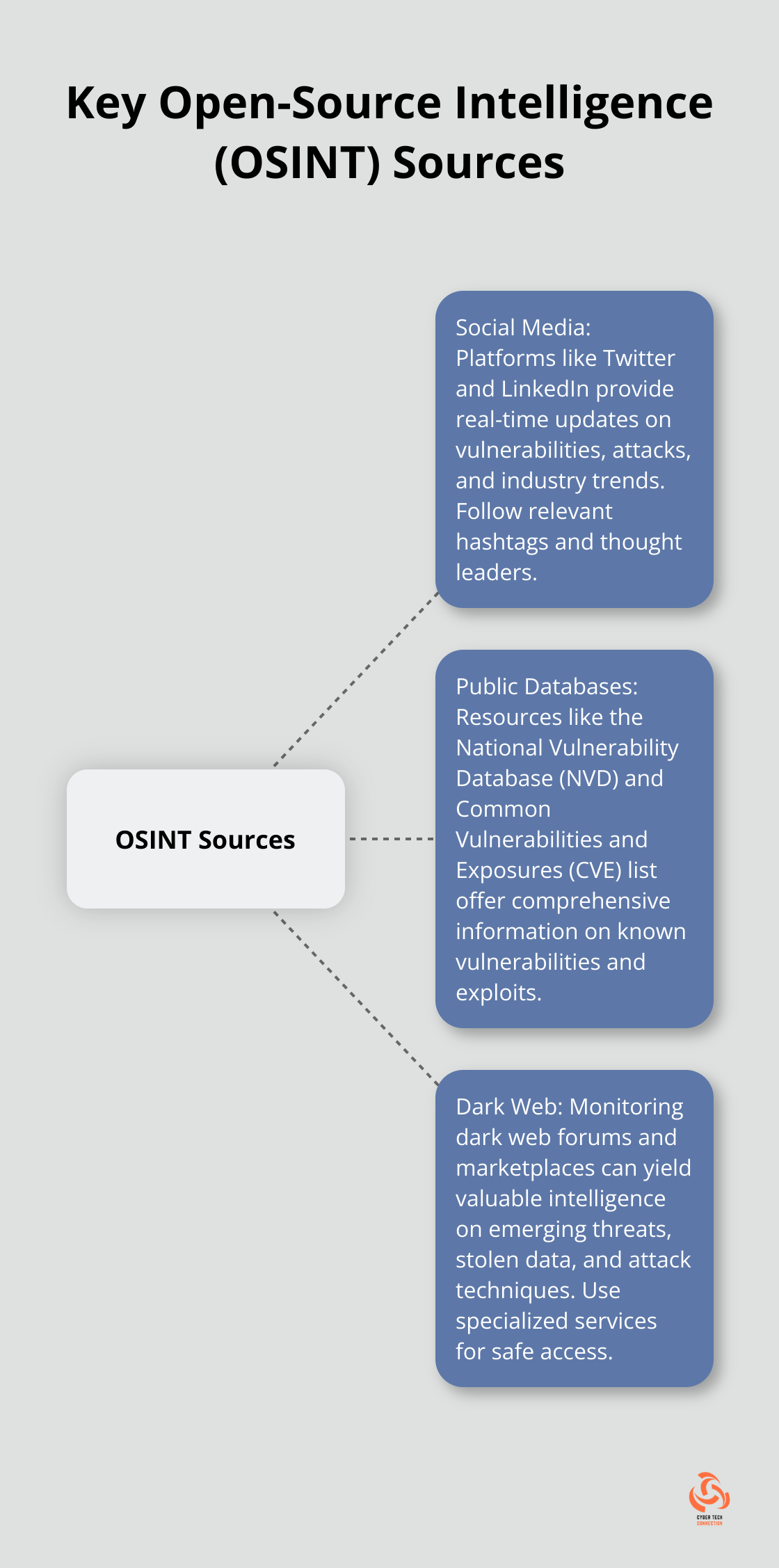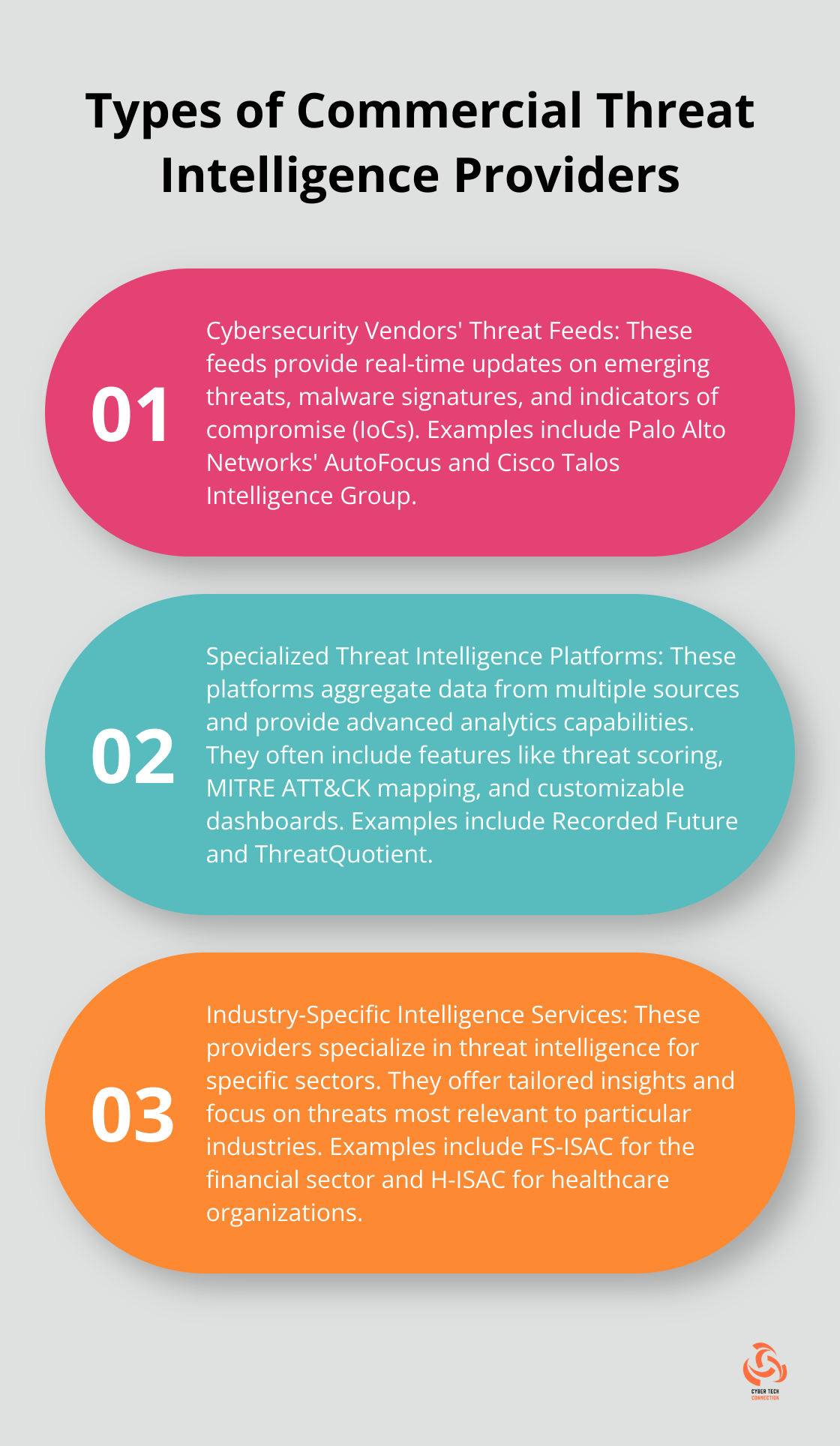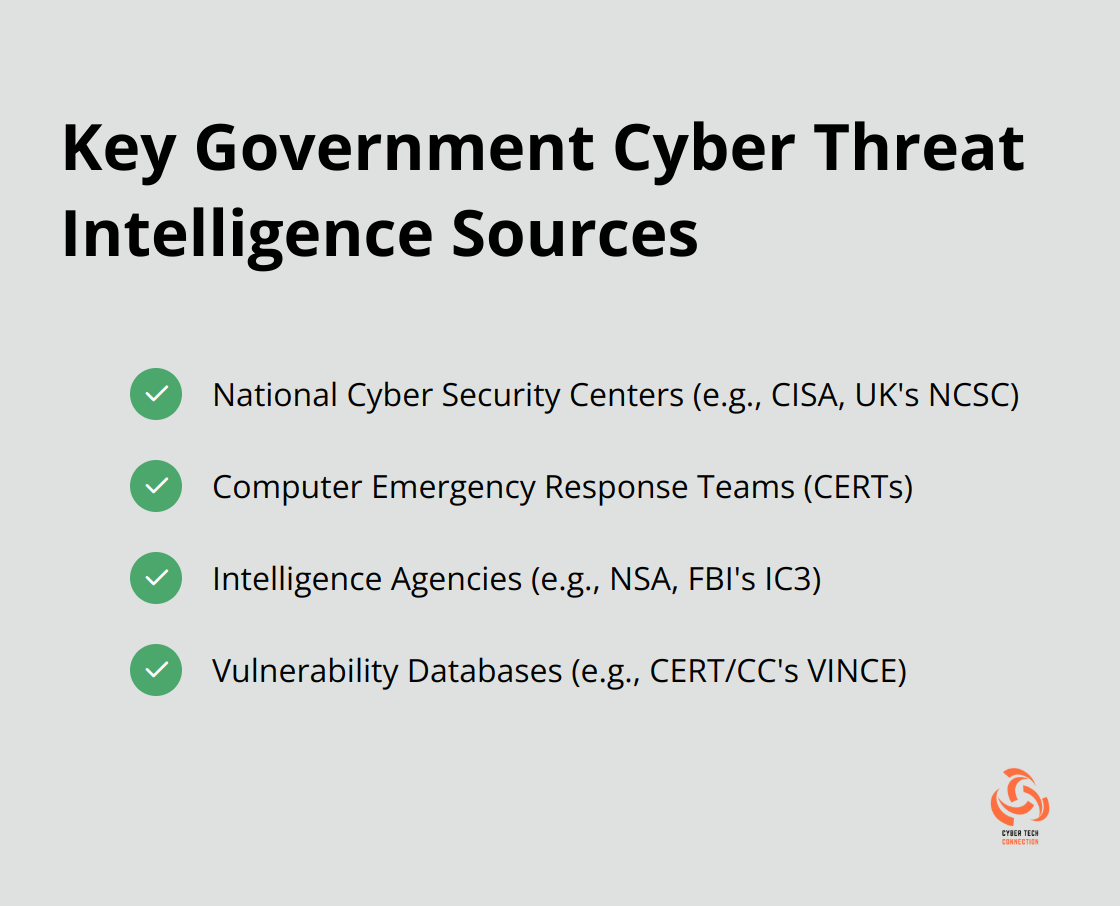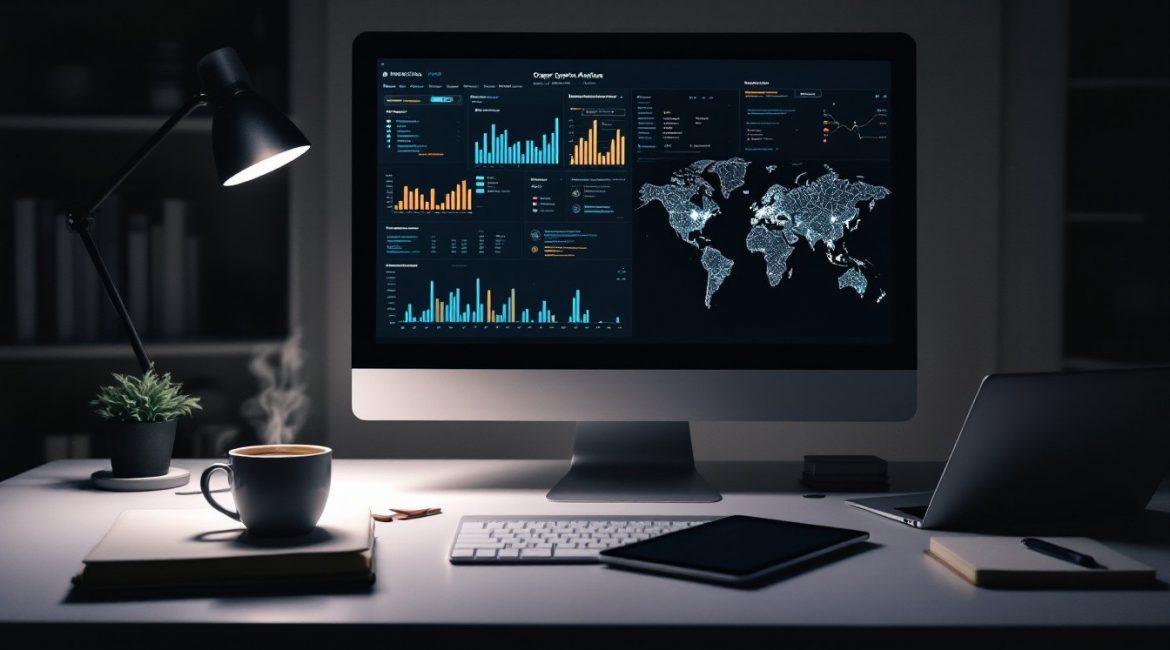Cyber threat intelligence sources are the lifeblood of effective cybersecurity strategies.
In this post, we’ll explore the key intelligence sources that every security professional should know. From open-source platforms to government agencies, we’ll cover the essential resources that can help you build a robust threat intelligence program.
Where to Find Open-Source Intelligence
Open-source intelligence (OSINT) provides cybersecurity professionals with invaluable insights into emerging threats, attack patterns, and vulnerabilities. This section explores three key OSINT sources that can enhance your threat intelligence capabilities.

Social Media: A Hotbed of Cybersecurity Information
Social media platforms offer more than just entertainment; they serve as rich sources of cybersecurity intelligence. Twitter, a favorite among security researchers and hackers, provides real-time updates on new vulnerabilities, ongoing attacks, and emerging trends. Security professionals can follow hashtags like #infosec, #cybersecurity, and #threatintel to stay informed.
LinkedIn also proves valuable for threat intelligence. Many cybersecurity experts share detailed articles and analyses on this platform. Following thought leaders and joining relevant groups allows professionals to access a wealth of expertise and stay updated on industry developments.
Public Databases: Comprehensive Vulnerability Intelligence
Public databases play a vital role in tracking known vulnerabilities and exploits. The National Vulnerability Database (NVD), maintained by NIST, is a repository of information on software and hardware flaws that can compromise computer security. Updated daily, it includes severity scores to help prioritize patching efforts.
The Common Vulnerabilities and Exposures (CVE) list serves as another essential resource. This standardized list of publicly disclosed cybersecurity vulnerabilities (updated regularly) helps security professionals identify potential weak points in their systems before attackers exploit them.
Dark Web: Unveiling Hidden Threat Intelligence
While we don’t endorse illegal activities, monitoring dark web forums and marketplaces can yield valuable intelligence on emerging threats. These hidden corners of the internet often host discussions about stolen data, exploit sales, and attack techniques.
Tools like Tor Browser provide access to these forums, but caution is paramount. Many organizations opt for specialized dark web monitoring services to safely gather intelligence without risking exposure. These services can alert users to data leaks, new malware strains, or discussions about vulnerabilities in specific industries. For example, Singularity Network Discovery maps networks, inventories assets, and identifies rogue devices, which is key to identifying dark web-related vulnerabilities.
OSINT sources (including social media, public databases, and dark web monitoring) contribute to a comprehensive view of the threat landscape. This approach allows security teams to anticipate potential attacks and strengthen defenses proactively.
While OSINT proves incredibly valuable, it represents just one piece of the threat intelligence puzzle. The next section will explore how commercial threat intelligence providers can complement and enhance OSINT efforts, providing a more robust defense against cyber threats.
Commercial Threat Intelligence Providers: Enhancing Your Security Arsenal
Cybersecurity Vendors’ Threat Feeds
Cybersecurity vendors offer threat feeds as part of their product offerings. These feeds provide real-time updates on emerging threats, malware signatures, and indicators of compromise (IoCs). Palo Alto Networks’ AutoFocus helps build actionable intelligence in addressing security threats including changes in usage trends over time. Cisco Talos Intelligence Group offers free threat feeds that cover a wide range of threats, from spam and phishing to more sophisticated attacks.
When you select a vendor’s threat feed, consider the breadth of their data sources and the relevance to your industry. Look for feeds that integrate seamlessly with your existing security infrastructure. This integration can significantly reduce the time to detect and respond to threats.
Specialized Threat Intelligence Platforms
Specialized threat intelligence platforms aggregate data from multiple sources and provide advanced analytics capabilities. These platforms often include features like threat scoring, MITRE ATT&CK mapping, and customizable dashboards.
Recorded Future provides real-time, actionable cyber threat intelligence. Their platform helps mitigate cyber risks, prioritize threats, and proactively secure businesses.
ThreatQuotient focuses on threat operations and management. It allows teams to centralize intelligence, automate workflows, and collaborate more effectively.
When you evaluate these platforms, consider factors like ease of use, integration capabilities, and the quality of their threat intelligence. Look for platforms that offer a free trial or demo to ensure they meet your specific needs.

Industry-Specific Intelligence Services
Some providers specialize in threat intelligence for specific industries. These services can be particularly valuable as they focus on threats most relevant to your sector.
The Financial Services Information Sharing and Analysis Center (FS-ISAC) provides intelligence specific to the financial sector. They offer real-time alerts, threat briefs, and vulnerability information tailored to financial institutions.
The Health Information Sharing and Analysis Center (H-ISAC) focuses on threats to healthcare organizations. They provide timely and actionable intelligence on threats like ransomware targeting hospitals or data breaches in healthcare systems.
When you consider industry-specific services, look for providers with a strong track record in your sector. Check if they offer threat hunting services or provide guidance on implementing security controls specific to your industry’s regulatory requirements.
Government Intelligence Empowering Cybersecurity
National Cyber Security Centers: Frontline Defense
National Cyber Security Centers (NCSCs) stand as pillars of cyber defense. The US Cybersecurity and Infrastructure Security Agency (CISA) exemplifies this role. CISA’s Cross-Sector Cybersecurity Performance Goals (CPGs) are a subset of cybersecurity practices, selected through a thorough process of industry and government collaboration. Their Known Exploited Vulnerabilities Catalog serves as an essential resource for security professionals, listing vulnerabilities actively exploited in the wild.
The UK’s NCSC offers comparable services, including the Cyber Security Information Sharing Partnership (CiSP). This platform enables member organizations to exchange cyber threat information in real time, promoting a collaborative approach to cybersecurity.
CERTs: Swift Response and Intelligence
Computer Emergency Response Teams (CERTs) constitute another vital source of threat intelligence. The US-CERT, a part of CISA, provides technical assistance, coordinates incident response activities, and disseminates timely cyber threat warnings.
CERT Coordination Center (CERT/CC), based at Carnegie Mellon University, maintains the Vulnerability Information and Coordination Environment (VINCE). This resource contains information about software vulnerabilities and is essential for understanding and mitigating potential threats.

Intelligence Agencies: Unveiling Cyber Threats
Intelligence agencies, despite their covert nature, often release public reports that offer valuable insights into cyber threats. The National Security Agency (NSA) regularly publishes cybersecurity advisories and technical reports. These documents often contain detailed information about nation-state threat actors and their tactics, techniques, and procedures (TTPs).
The FBI’s Internet Crime Complaint Center (IC3) releases an annual Internet Crime Report. This report presents a comprehensive overview of cybercrime trends and statistics, helping organizations understand the evolving threat landscape.
Leveraging Government Intelligence
Organizations can enhance their cybersecurity posture by incorporating intelligence from these government sources. This approach allows security teams to:
- Stay informed about emerging threats
- Understand attack patterns and vulnerabilities
- Implement proactive defense strategies
The Role of Commercial Providers
While government sources offer invaluable intelligence, commercial providers complement these efforts. Companies like CTC integrate government intelligence with proprietary data and expertise to provide comprehensive threat protection. CTC’s focus on mobile defense and endpoint management positions it as a top choice for organizations seeking robust cybersecurity solutions.
Final Thoughts
Diverse cyber threat intelligence sources form the backbone of robust cybersecurity strategies. Organizations must identify relevant sources for their specific needs and implement a centralized platform to aggregate and analyze data effectively. Regular evaluation of source effectiveness will ensure the intelligence remains actionable and accessible to security teams.
Artificial intelligence, machine learning, and the expansion of IoT devices shape the future of cyber threat intelligence. These technologies analyze vast amounts of data, identify patterns, and address the growing attack surface. Privacy regulations also influence how threat intelligence is collected and shared across industries.

